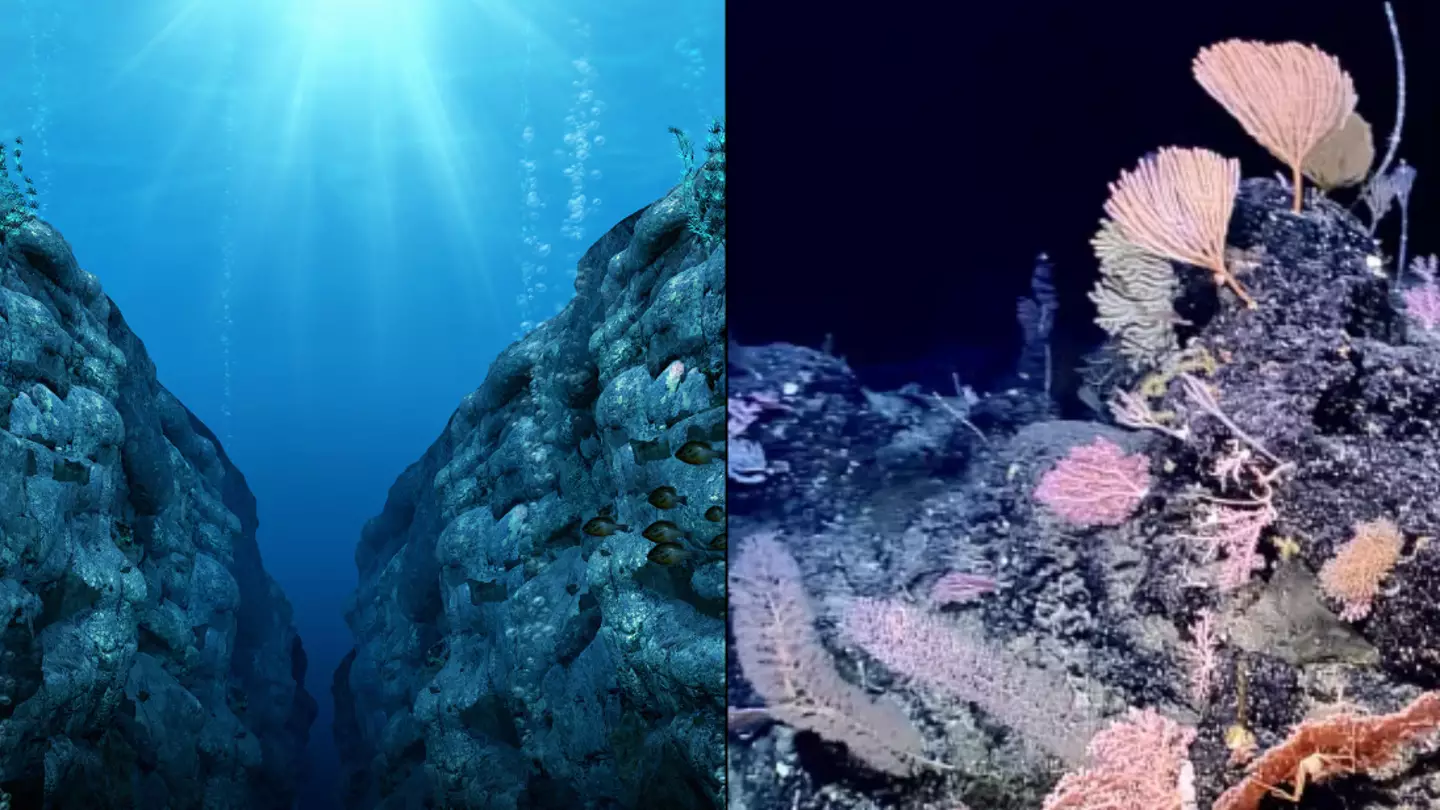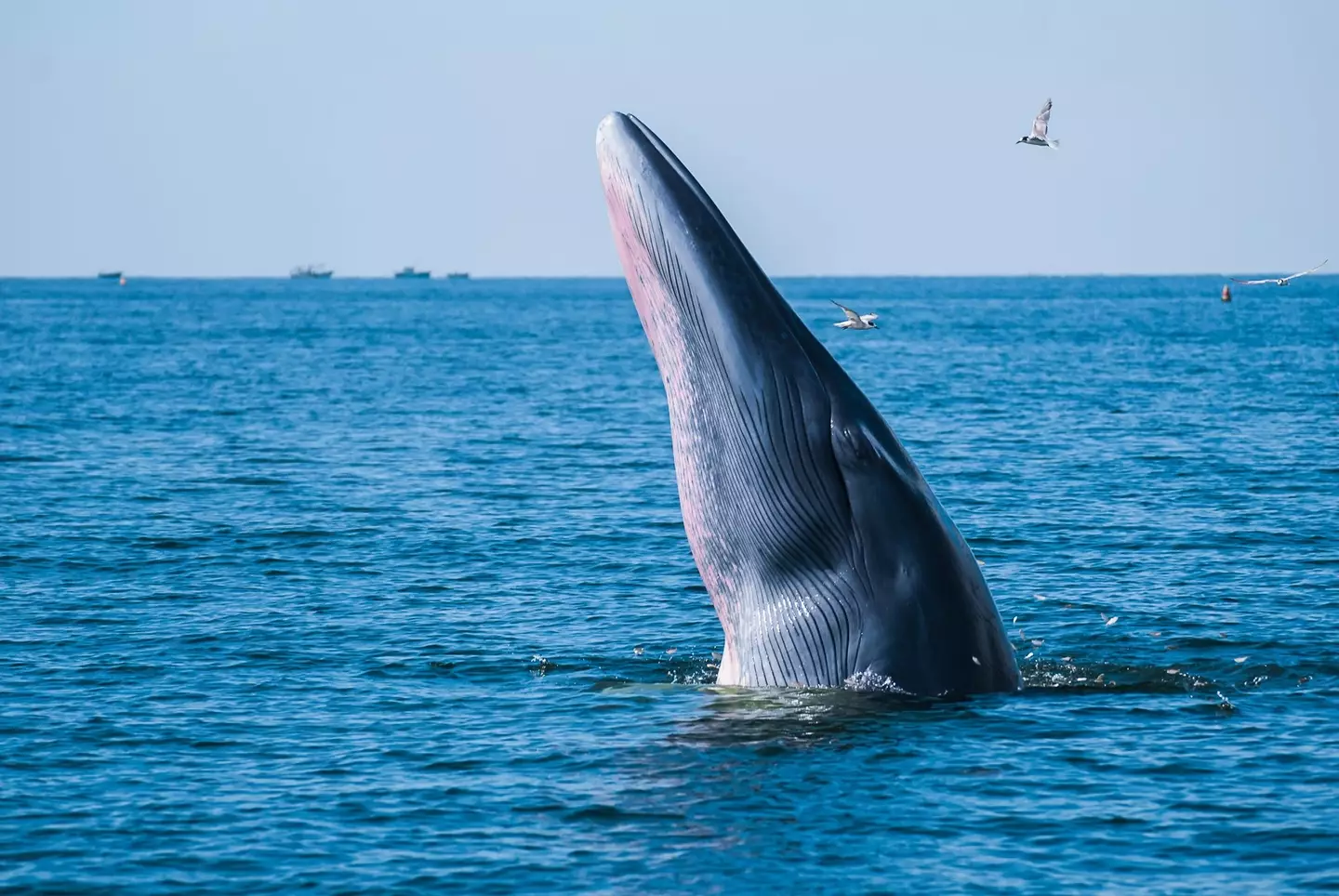
Noises in the Mariana Trench that left researchers scratching their heads have finally been solved, and it’s not what you’d think.
OK, so when you hear terms like ‘alien song’, you’re going to conjure up some sort of sci-fi Fifth Element scene of an actual alien singing, but this isn’t the same thing.
The 36,000ft deep trench is home to a range of weird and wonderful creatures, but apparently, one of those things could be an alien...
Well, that’s what some have thought for the last 10 years after hearing a strange noise deep at the floor of the Pacific Ocean.
Advert
It all began in 2014 when sounds were recorded coming from the trench which lasted around 2.5 and 3.5 seconds.
Because researchers had absolutely no idea what these sounds were, they called them ‘biotwangs’ (unidentified sounds) and left it at that.
However, scientists from the National Oceanic and Atmospheric Administration (NOAA) have decided to re-examine the files to finally get to the bottom of this mystery, and what they found was nothing short of a pleasant discovery.
So, before we continue further - I’m going to hold your hand and tell you that there was no alien crooning out songs down the bottom of the Mariana Trench.
It should be obvious, but just to be sure, no alien lives down there.
Advert
.png)
Instead, they found something unexpected.
The team of researchers used underwater gliders to conduct acoustic surveys in the deep water.
That’s when they could hear deep moaning sounds which came out at around 38 and 8,000 hertz, leaving scientists confused again.
It was only in 2016 that the first idea was thrown out there, proposing that the sounds were likely being created by a baleen whale and that this was some sort of new call.
Advert
Sharon Nieukirk, senior faculty research assistant in marine bioacoustics at Oregon State University (OSU), explained: “It’s very distinct, with all these crazy parts.
“The low-frequency moaning part is typical of baleen whales, and it’s that kind of twangy sound that makes it really unique.
“We don’t find many new baleen whale calls.”

But now that researchers have re-examined the noises using the acoustic data as well as visual data, it’s not a far-off idea.
Advert
The new study, which was led by Dr Ann Allen, figured that while it’s not a baleen whale call, it was the call of Bryde’s whales.
The findings, which have been published in the Frontiers in Marine Science journal, explained: “It was assumed to be produced by a baleen whale, but without visual verification it was impossible to assign a species.
“Using a combination of visual and acoustic survey data collected in the Mariana Archipelago, we determined that biotwangs are produced by Bryde’s whales.”
To figure out that it was them that were creating the call, researchers used artificial intelligence to confirm their findings.
The study stated: “We used a combination of manual and machine learning annotation methods to detect biotwangs in our extensive historical passive acoustic monitoring datasets collected across the central and western North Pacific.
Advert
“We identified a consistent seasonal presence of biotwangs in the Mariana Archipelago and to the east at Wake Island, with occasional occurrence as far away as the Northwestern Hawaiian Islands and near the equator (Howland Island).”
Dr Allen explained to Popular Science: “It’s possible that they use the biotwang as a contact call, a sort of 'Marco Polo' of the ocean.
“But we need more information before we can say for sure.”
Topics: Animals, Science, Technology, News, Aliens
